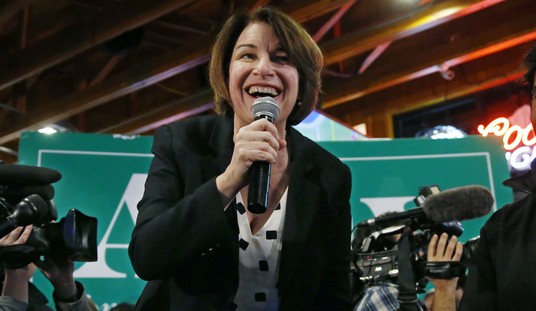With the shale gas boom in full swing, gas prices are at 10-year lows. We have the realistic prospect of abundant domestic supplies of a clean-burning fuel for the foreseeable future, who doesn’t like natural gas?
Ask the Sierra Club. This week, the venerable environmental organization announced its “Beyond Natural Gas” initiative, to go along with their “Beyond Coal” and “Beyond Oil” campaigns. Of course, they hate nuclear energy too.
“Fossil fuels have no part in America’s energy future – coal, oil, and natural gas are literally poisoning us. The emergence of natural gas as a significant part of our energy mix is particularly frightening because it dangerously postpones investment in clean energy at a time when we should be doubling down on wind, solar and energy efficiency.”
—Robin Mann, Sierra Club President
The Sierra Club has over a half-million members (down from 600,000) and an annual budget of $100 million. They are arguably the most influential environmental lobby in the country. People take them seriously, and politicians listen.
With their opposition to the fossil fuels and nukes, the Sierra Club takes 91% of our current energy sources off the table (see EIA chart at the end of the post). And most of the remaining 9% they’re not too crazy about. Below the fold, we’ll take a closer look.
Youthful naïvete has an endearing quality. If their proposal were merely impractical, it would be naïve. The Sierra Club is not naïve. Their plan is physically and economically impossible. They have a willfully foolish, craven and destructive agenda. They are not looking for solutions. They wish an end to our industrialized civilization. They wish us to return to mud huts.
There are responsible environmental organizations. It should be an embarrassment that anyone should give the Sierra Club a nickel.
The Sierra Club’s ultimate goal, not surprisingly, is to save the planet from Global Warming. To that end, they wish to curtail 90% of carbon dioxide emissions by 2050 – thirty-eight years from now.
How will they do it? In Robin Mann’s words: “[W]e should be doubling down on wind, solar and energy efficiency.”
Point #1: Everyone is for energy efficiency, and it happens naturally due to economics and technical advances. But “energy efficiency” is a strategy to use existing fuels more efficiently, not replace them. That means the only technologies on the table are wind and solar. So that leads to …
Point #2: This is not “doubling down”, it’s going “all in“. All in on a sucker’s bet. That’s because wind and solar would have to grow by a factor of 50 times their contribution in 2011. Not “grow by 50%” — 50 times. Even if we suddenly developed the will to do it, there’s not enough money/resources in the known universe to make it possible. And if we did it, what about the Chinese and the rest of the world? And what would be the environmental consequences of making the conversion?
 See that little pink bar, way on the right? The Sierra Club loves that. Everything else, not so much. Not at all, in fact. And it’s even worse than that chart makes it appear — this is a graph of domestic sources. In addition to the 78 quads depicted here, we import another 20. And Geothermal has limited growth potential. So that little pink bar needs to grow from a value of 2, to 100.
See that little pink bar, way on the right? The Sierra Club loves that. Everything else, not so much. Not at all, in fact. And it’s even worse than that chart makes it appear — this is a graph of domestic sources. In addition to the 78 quads depicted here, we import another 20. And Geothermal has limited growth potential. So that little pink bar needs to grow from a value of 2, to 100.
Or more than 100, because the population is going to grow by 2050. And since wind and solar are not primary transportation sources, we’d need to generate even more to account for efficiency losses.
This radicalism can be understood in the context of a recent reorganization:
Carl Pope, who has led the Sierra Club for much of the last two decades, is planning to leave the organization next year as it struggles to redefine its mission in a tough economy, the organization said Friday. … Mr. Pope, 66, stepped down as executive director last year after 17 years, turning the job over to Michael Brune, 40, who came to the Sierra Club from the Rainforest Action Network and Greenpeace, younger and politically more aggressive groups. Mr. Pope has held the title of chairman since Mr. Brune arrived and will remain a consultant to the club until the end of next year.
Has the Sierra Club jumped the shark? That happened long ago. My friend, with this natural gas pronouncement, the Sierra Club gave the shark a lap dance. And had its love child.
_______________________________________________________________
The Wall Street Journal reminds us that not long ago, the Sierra Club and natural gas were BFFs (to the tune of $26 million from Chesapeake Energy, never a shrinking violet when it comes to advancing its own interests):
Sierra Clubs Natural Gas (WSJ website may require subscription):
The political irony is that not too long ago the Sierra Club and other greens portrayed natural gas as the good fossil fuel. The Sierra Club liked natural gas so much (and vice versa) that from 2007-2010 the group received $26 million in donations from Chesapeake Energy and others in the gas industry, according to an analysis by the Washington Post. Some of that money was for the Beyond Coal campaign. …
But now that the hydraulic fracturing and shale revolution has sent [wellhead] gas prices down to $2.50 [from $8 or more per million BTU in 2008], the lobby fears natural gas will come to dominate U.S. energy production. At that price, the Sierra Club’s Valhalla of wind, solar and biofuel power may never be competitive. So the green left has decided it must do everything it can to reduce the supply of gas and keep its price as high as possible.
_______________________________________________________________
According to the Sierra Club’s official energy policy directive (.pdf link), most recently updated by the national board in July 2011:
Resources Opposed by the Sierra Club:
- Anything Coal (Conventional, Coal-to-Liquids, Coal-to-Gas, etc.)
- Nuclear Power Plants
- New Large Hydroelectric Plants
- Incineration of Municipal Solid Waste
- Landfill Gas to Energy Facilities
Resources Preferred by the Sierra Club
- Community Renewables, Distributed Generation
- Onshore and Offshore Wind [as long as it’s sustainable and doesn’t impact endangered species, etc.]
- Central Station Solar
- Combined Heat and Power [but not coal-based, so essentially natural gas]
- Low-Temperature Geothermal
Resources Generally Acceptable to the Sierra Club
- New Small Hydroelectric Plants
- Ocean Energy Resources
- High Temperature Geothermal
Ethanol? “Biofuels from sustainable feedstocks using appropriate production technologies and facilities can be an important ingredient in a clean energy future. Inappropriately located, poorly regulated or excessively large biofuel facilities can easily create environmental problems greater than those they solve.” Shorter answer: No, not in its current form.
_______________________________________________________________
The following EIA chart is kind of busy at first glance, but it contains a wealth of information on U.S. energy sources and uses.
 Cross-posted at Maley’s Energy Blog.
Cross-posted at Maley’s Energy Blog.















Join the conversation as a VIP Member